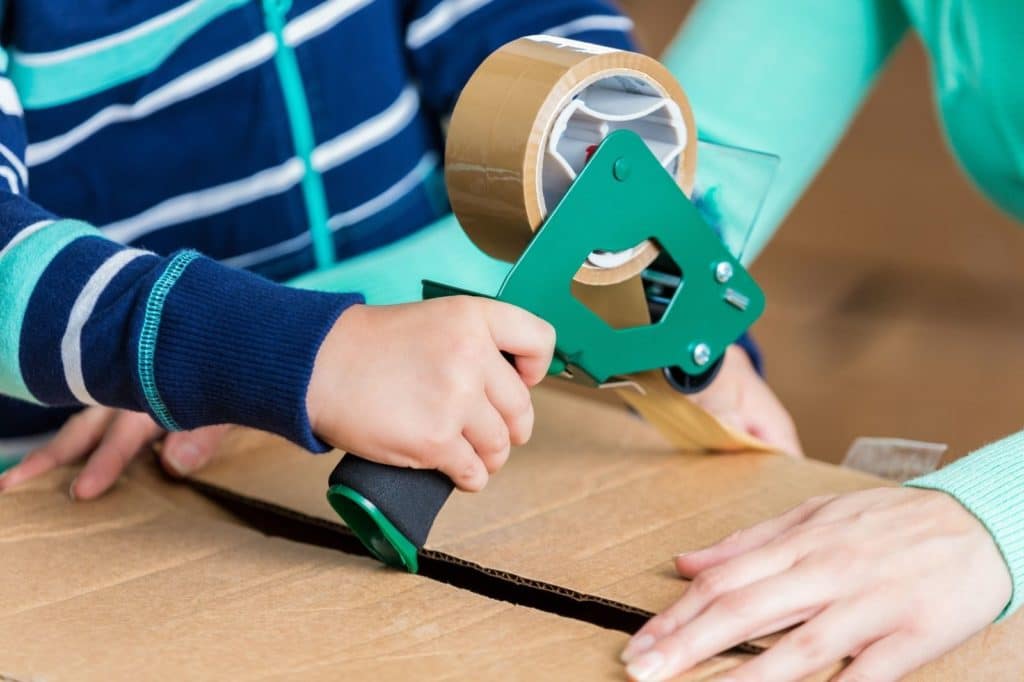The military move. Inevitable and exciting? Yes. Stressful? Not necessarily. With planning and communication, a military move can be something children – and parents – look forward to and not dread.
Kenneth J. Graves, PhD, is a clinical child psychologist with Child and Family Behavioral Health Services at Brooke Army Medical Center in San Antonio. He feels that accentuating the positive aspects is vital to keeping anxiety low.
“The focus of energy and conversations regarding the move should be on where the family is moving to, rather than what they are moving away from,” Graves said. “Conversation should focus on the positive things about the move such as having a new place to explore, making new friends, and perhaps learning about a new culture.”
Parents should tailor their discussions based on their children’s ages, Graves added.
“Very young children often have a difficult time understanding the difference between certainty and possibility,” he said. “For them, if something is stated then it’s going to happen.
“With older children, it is typically okay to discuss a move before it is official since they have a better understanding of uncertainty,” Graves added, cautioning that “while children in military families are often accustomed to moving every two to three years, it is still important to be mindful of the potential impact it has.”
Leigh B., who has made three moves as an active duty member and five as a civil servant, agreed with Graves’ communication suggestion. When it came time to move, “we talked about it. A lot. We would tell them that we were excited and scared, too,” she shared.
“Keeping them informed kept them excited, too. When they would admit being scared we would let them talk about it,” she said.
“We’ve lived eight places since my oldest was born. He’s gone to eight different schools in six different locations,” she said. “My daughter has gone to six schools. She’ll start her seventh this fall when she starts high school.”
Leigh said she moved her oldest child once during the school year, and it affected his grades and behavior. After that episode, she decided to make a change with the next move. With a spouse who is no longer in the military, she has the advantage of leaving the children in place and letting them finish the school year where they are.
“I move ahead of them,” she explained. “I’ve done this twice now and it seems to work better than moving them midyear.”
Research and Work with the New School
Parents should begin gathering information about the neighborhood school as soon as they learn the location of their new home, Graves stressed. This information should include such things as number of students in the school, class sizes, sports, clubs, a calendar of events, and special academic services.
“This information can be used to have conversations about things of interest to the child in their new school,” Graves said. He added that it’s especially helpful for younger children to visit the school before their first day.
“This allows an opportunity to meet the teacher, see the classroom, and see their peers before being there for the entire day on their first day of attendance,” Graves said, adding that such a visit also facilitates discussion about what to expect on the first day of school.
“Schools on and near military installations are typically accustomed to children entering throughout the year,” Graves said. “It can also be helpful if the school can arrange for the child to talk with other students, who have had a similar experience, about things they found helpful in making the transition. This could offer an additional source of support for the child and, possibly, a new friend.”
Include your Child
Graves said there are numerous tasks, both practical and emotional, that children can do to make them feel like they play a role in the move. These include:
- Choosing and packing a few personal things they want to keep with them during the move
- Deciding what they will do on the road if it involves a long car trip
- Having a “goodbye party” with close friends
- Writing letters or making pictures for friends they’re leaving behind
- Looking at pictures and/or reading stories about the new place they will be living
“Families can sit down together and go online to learn about the place they’re going,” Graves said.
“Websites that describe such things as parks, children’s museums, family activities, upcoming events and other things can create positive discussions and foster a sense of excitement and adventure about moving.”
Negative Reactions and Support
But sometimes, no matter how much a parent plans or anticipates, a child may react negatively to a move.
“When we moved overseas, my youngest was 6 and she threw up a few hours before we got on the plane, and did that for the first three months we were in Germany,” Leigh said.
“Every time we would get in the car to go somewhere she hadn’t been before she would get sick,” she continued. “When we moved back to the states she did the same thing. I finally took her to counseling and the therapist taught her techniques to deal with the anxiety. She uses breathing, positive focus and grounding. Grounding is probably what has helped her the most.”
Leigh admits she waited too long to take her daughter to a counselor.
“When we were in Germany she was getting nervous far too often. I should have taken her after a month. She suffered for several months that she probably wouldn’t have if I had gotten intervention sooner. We were in a foreign country and weren’t seen by the Department of Defense healthcare network so I wasn’t sure what to do,” she explained.
Graves said that if a child seems to be resistant to moving, a parent should first try to understand why.
“Such resistance is usually the result of concern and worry. Talk with the child about their likes and dislikes about the idea of moving,” he said. “Validate their feelings by letting them know that many children don’t like moving from one place to another and that such feelings are normal. If the parent also has concerns or worries it can be helpful to talk about what some of those might be and how they are dealing with them. This allows the parent to model coping skills in this situation.”
The following resources can assist with helping military children prepare for a move:
- The U.S. Navy has instituted a program called FOCUS – Families OverComing Under Stress. It provides resilience training to military children, families and couples. FOCUS can be found online and at nearly 30 U.S. Navy, Marine Corps, Army and Air Force installations. You can subscribe to a quarterly newsletter that offers tips on common challenges such as moving.
- Military Kids Connect is an online community for military children ages 6-17 years old that provides access to age-appropriate resources to support children dealing with the unique psychological challenges of military life.
- MilitaryOneSource offers a variety of toolkits to help families, including a series of articles that deal with all aspects of moving.
- Military Spouse has a comprehensive article titled “The Impact of PCS Moves on Your Kids.”
- Operation We Are Here has a detailed list of advice and resources for military moves.










